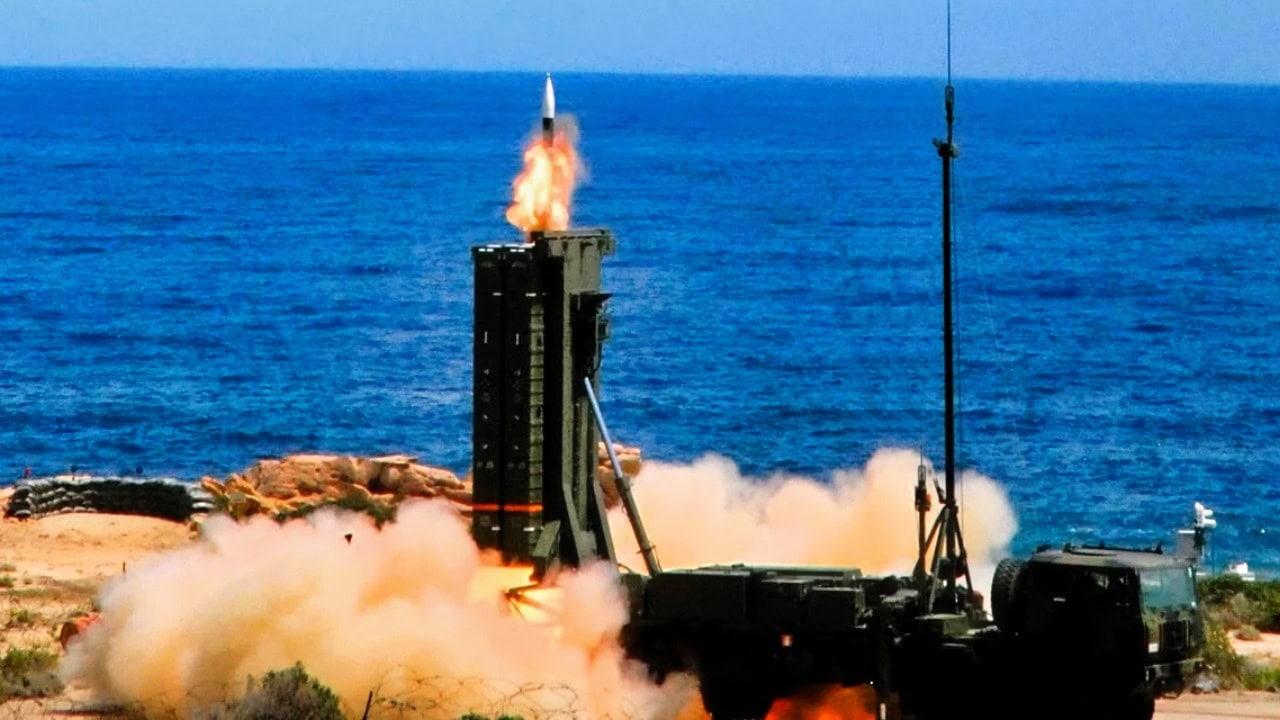Summary and Key Points: In response to evolving geopolitical pressures and encouragement from the U.S. to strengthen European defenses, OCCAR members France, Italy, and the UK are significantly ramping up production of Aster air defense missiles.
This advanced missile family, which includes the Aster 15 and Aster 30 variants, is designed to intercept aircraft, drones, cruise missiles, and ballistic threats with exceptional accuracy and range. Accelerating Aster missile production will enhance Europe’s autonomous defense capability, reinforce strategic independence, and foster stronger intra-European defense cooperation.
It also represents an essential step toward safeguarding Europe against potential future conflicts, particularly in an era of uncertain American commitment.
Why Europe Is Rushing to Accelerate Aster Missile Production
On March 11 2025, The Organization for Joint Armament Cooperation (OCCAR) which includes France, Italy and the UK, announced an agreement to accelerate and expand the production of Aster air defense missiles.
The announcement came after the US “encouraged” Europe to start building up its own defenses. The decision to boost missile production has many geopolitical implications for the UK and Europe in general.
As political tides change, Europe must be able to defend itself in case the United States is unable or unwilling to get involved in another conflict.
The Aster Missile Family
First, some background on the Aster missile. The Aster missile family, developed collaboratively by France and Italy, represents a cornerstone of modern European air defense technology. The name “Aster” stands for “Aérospatiale Terminale,” reflecting the contributions of Aérospatiale during the project’s initial phases.
The Aster missiles are designed to intercept and destroy a wide range of aerial threats, including high-performance combat aircraft, unmanned aerial vehicles (UAVs), cruise missiles, and anti-ship missiles.
The development of the Aster missile began in the 1990s as part of a program aimed at creating a new air defense system capable of countering a wide range of aerial threats. The primary objectives included achieving high accuracy and effectiveness, multirole capability, and mobility. The Aster missile family was designed to be integrated across various platforms, both land and maritime.
The Aster missile family comprises two main variants: the Aster 15 and the Aster 30. Both variants share a common terminal delivery system and accelerators but differ in their range and specific applications. The Aster 15 has a range of approximately 30 kilometers and a speed of Mach 3 (1,000 m/s). It is primarily used for short to medium-range engagements, optimized for lower-altitude targets such as anti-ship missiles and fast-moving aircraft.
On the other hand, the Aster 30 has a range of over 120 kilometers (up to 150 kilometers for the Block 1 NT variant) and a speed of Mach 4.5 (1,400 m/s). It is designed for long-range engagements, capable of intercepting ballistic missiles and high-altitude targets.
Both Aster 15 and Aster 30 missiles are equipped with advanced guidance systems, including inertial navigation and active radar homing. This combination allows the missiles to autonomously detect and track targets during the terminal phase of flight.
The missiles are powered by a solid-fuel rocket motor, providing the necessary thrust and maneuverability. They feature a fragmented warhead designed to disperse a large number of fragments upon detonation, effectively damaging the target.
The guidance system includes an Inertial Navigation System (INS) for accurate positioning, Active Radar Homing (ARH) for terminal guidance, and a Command Guidance System for trajectory adjustments.
Europe Needs to Rearm Itself
In March 2025, the United Kingdom, along with France and Italy, announced an accelerated production schedule for the Aster missiles. This decision was made to enhance the air defense capabilities of these nations in response to evolving security challenges. The contract covers the production of new Aster 30 B1s and Aster 15s, with a focus on accelerating the delivery of missiles already ordered.
The goal is to deliver 134 additional missiles between 2025 and 2026. This move reflects the strong commitment of France, Italy, and the UK to strengthening their air defense capabilities. It also highlights the importance of European cooperation in defense manufacturing.
The acceleration of production rates is the result of adaptations made by MBDA and its subcontractors. This initiative aims to reduce the production timeline for Aster missiles from 42 months in 2022 to under 18 months by 2026, while boosting output by 50%.
Strategic Considerations
The acceleration of Aster missile production has several strategic implications. By increasing the number of available Aster missiles, the UK, France, and Italy can better protect their airspace against a wide range of aerial threats. This includes high-performance combat aircraft, UAVs, cruise missiles, and ballistic missiles.
The joint acquisition and accelerated production of Aster missiles underscore the importance of European defense cooperation. This collaboration strengthens the collective security of the participating nations and enhances their ability to respond to shared threats.
The increased production rates and reduced timelines will benefit the European defense industry. Companies like MBDA, Thales, and their subcontractors will see increased demand for their products and services, leading to economic growth and job creation.
The decision to accelerate Aster missile production reflects the changing geopolitical landscape. As global security challenges evolve, nations are investing in advanced defense technologies to ensure their security and maintain a strategic advantage.
The Aster missile family is a critical component of modern European air defense systems, offering high accuracy, multirole capability, and mobility. The recent announcement by the UK, France, and Italy to accelerate the production of Aster missiles highlights the importance of these systems in maintaining national security.
This move not only enhances the air defense capabilities of the participating nations but also strengthens European defense cooperation and supports the defense industry.
About the Author: Isaaz Seitz
Isaac Seitz, a 19FortyFive Defense Columnist, graduated from Patrick Henry College’s Strategic Intelligence and National Security program. He has also studied Russian at Middlebury Language Schools and has worked as an intelligence Analyst in the private sector.

